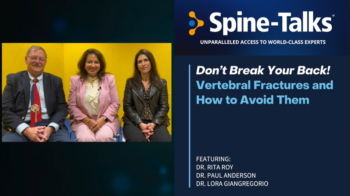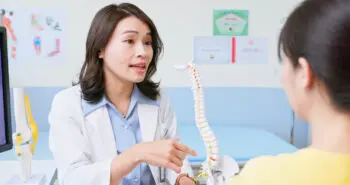By Niteesh Bharara, MD, Virginia Spine Institute and
Rikin Shah, BS, Trinity School of Medicine, PGY-4
Modern Day Advancements
Regenerative medicine embodies a distinct and major advancement in modern medical care. Therapies from this medical field are expected to transform the treatment paradigm of musculoskeletal problems. For decades, most musculoskeletal treatments have not been aimed at eliminating the root cause of an ailment, but have instead addressed only the symptoms of a particular ailment. With advances in the field of regenerative medicine, trained physicians are now able to modify and address the underlying cause of a patient’s problem, instead of simply treating symptoms which arise from a problem. There is mounting evidence to show that regenerative medicine may be superior to traditional medicine in some cases. Over the course of many years, these revolutionary therapies have gone from novel ideas to what are now proven, evidence-based treatments that have produced successful outcomes for problems which were unable to be properly addressed.
Low Back Pain
Lower back pain is the leading cause of global disability, and lumbar disc degeneration is the most common cause of disability in the United States — it also happens to be the cause of 40% of chronic lower back pain cases. Intervertebral discs, which lie between the vertebral bodies, act like pads or “shock absorbers” for our body’s movements; each of those discs is composed of an outer band that resembles a tire (annulus fibrosus) and an inside substance that resembles gel (nucleus pulposus). Though most disc degeneration remains asymptomatic, pain emanating from the discs (discogenic back pain) is very often the cause of both acute and chronic lower back pain.
Normally, discogenic back pain (commonly referred to as “disc pain”) can be treated successfully with traditional treatments such as physical therapy. Despite this great success rate, it is estimated that approximately 10% of disc pain sufferers fail to improve with both traditional medical treatments and physical therapy. It is important to remember that disc pain arises for a number of reasons, including:
- bodily trauma (sports injuries, laborious work, accidents)
- age-related reasons — better known as “wear and tear” to the vertebral disc (those “shock absorbers”)
More often than not, injuries will go unnoticed or ignored by a patient. With time, an injury can certainly worsen and lead to various degrees of pain that impedes one’s ability to have a high-quality and active life.
The problem with Traditional (Indirect) Treatments
Traditional non-operative methods used to treat discogenic low back pain are physical therapy, analgesics (pain-relievers), anti-inflammatory injections, and orthoses (braces). These treatments will often need to be used in combination and may need to continue over a long period of time for patients to get any appreciable form of pain relief. This type of regimen may require a patient to sustain multiple physical therapy appointments, medications, and a back brace, which is often unsustainable and becomes inconsistent in the long-term.
Over-the-counter and prescribed pain medications are not good options due to limited efficacy and side effects. Although prescription pain medicines have a higher efficacy — the side effects, tolerance, and dependency make them bad choices for extended use. Orthoses such as back braces are expensive, uncomfortable, and take several rounds of trial and error to find the right fit for a patient. These may also weaken the core strength over time, worsening the back pain. Injections such as steroids require that an experienced specialist administer them and to do so rather often. Even when patients are able to achieve pain relief from any of the aforementioned treatments, there is zero structural improvement created for the damaged disc. So, that disc remains damaged and at risk of causing pain and further problems at any given moment.
The Promise of Regenerative Medicine Non-surgical Treatment for Disc Pain
With the emergence of regenerative medicine procedures, disc anatomy can be modified and disc pain that failed to be resolved using traditional methods can be resolved almost permanently. There are two main substances used in regenerative medicine treatments. The first substance is platelet rich plasma (PRP) which is literally just a concentration of the platelets mixed with growth factors found in a patient’s blood. The second substance is called bone marrow aspirate concentrate (BMAC) which is a concentration of a patient’s extracted bone marrow and contains the growth factors and mesenchymal stem cells that are stored there. Either of these two substances can be precisely injected into the damaged disc in order to alter the disc structure and its environment — essentially regenerating a painful disc into a disc that does not hurt. Treatment is typically short in duration and consists of a simple injection procedure with very little subsequent downtime. Great success has been found in treating patients that:
- cannot get back into their desired activities because of back pain
- have their backs give out frequently
- experience chronic pain
- have no other hope outside of surgery
The Future is Here
Before the evolution of the regenerative medicine non-surgical treatment for disc pain, good treatment options were lacking for disc pain sufferers who had been failed by various conservative measures. Regenerative medicine therapies are life-altering for numerous demographics of patients; most importantly, these therapies have given patients the ability to return to pain-free lives in relatively short time frames and without undergoing invasive surgical procedures that carry with them subsequent side effects and long recovery periods.
The future of regenerative medicine is bright. As more patients continue to experience positive outcomes, regenerative medicine procedures will increasingly replace invasive surgical procedures and more patients will seek out the ability to have their body heal itself through innovative regenerative medicine techniques.
References
- Pettine K, Suzuki R, Sand T, Murphy M. (2015). Treatment of discogenic back pain with autologous bone marrow concentrate injection with minimum two year follow-up. International Orthopaedics, 40, 135–140. DOI 10.1007/s00264-015-2886-4
- Barakat AH, Elwell VA, Lam KS. (2019). Stem cell therapy in discogenic back pain. Journal of Spine Surgery, 5(4), 561–583. doi: 10.21037/jss.2019.09.22
- Vadalà G, Ambrosio L, Russo F, Papalia R, Denaro V. (2021). Stem Cells and Intervertebral Disc Regeneration Overview – What They Can and Can’t Do. International Journal of Spine Surgery. 15(s1), 40–53. https://doi.org/10.14444/8054
- Noriega DC, Ardura F, Hernàndez-Ramajo R, Martín-Ferrero MÁ, Sànchez-Lite I, Toribio B, Alberca M, García V, Moraleda JM, Sànchez A, García-Sancho J. (2017). Intervertebral Disc Repair by Allogeneic Mesenchymal Bone Marrow Cells: A Randomized Controlled Trial. Transplantation. 101(8):1945-1951. doi: 10.1097/TP.0000000000001484. PMID: 27661661.



